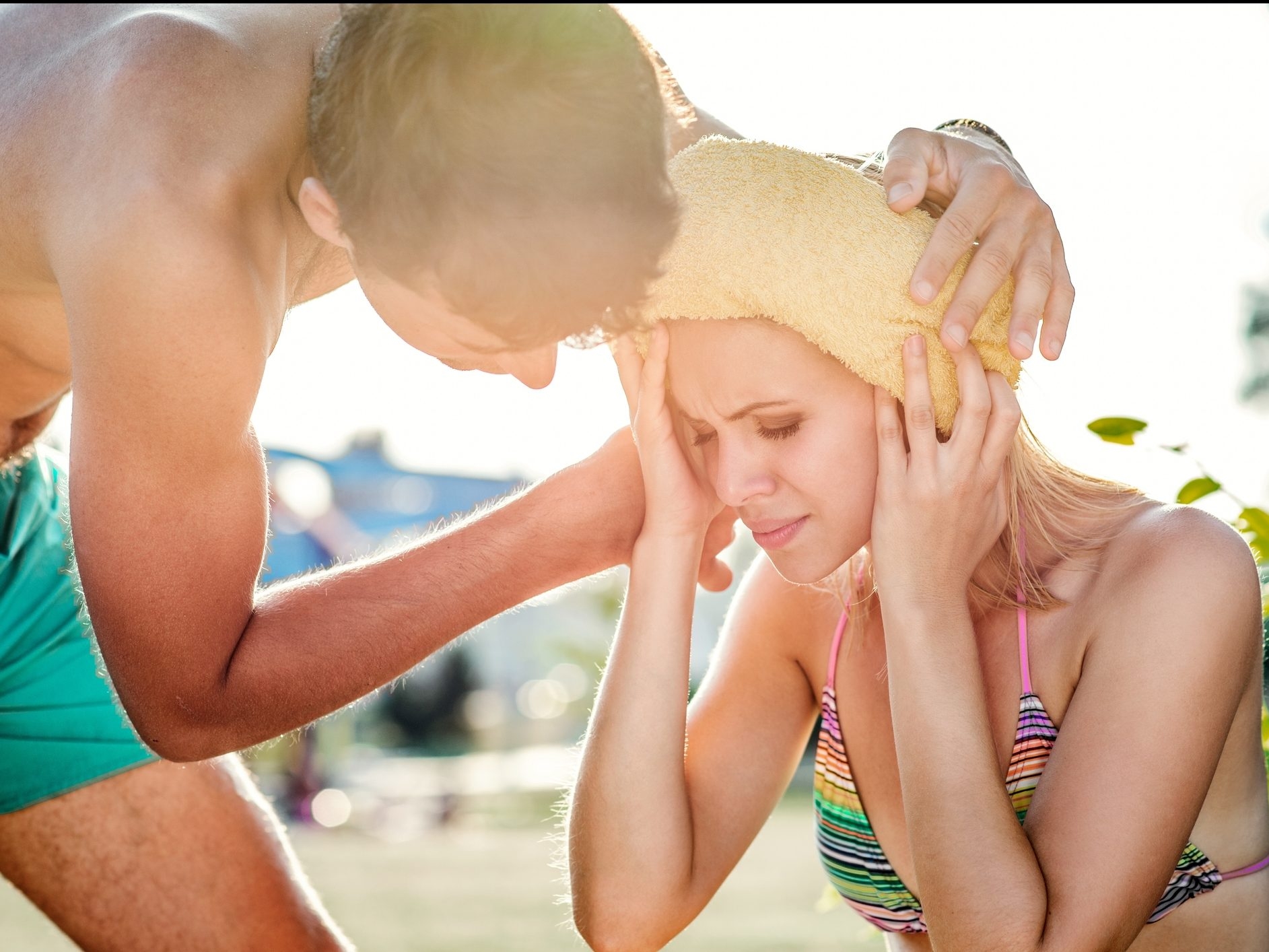
Reviews and recommendations are unbiased and products are independently selected. Postmedia may earn an affiliate commission from purchases made through links on this page.
Article content
Our brain works hard to coordinate and regulate our body’s temperature. But rising temperatures and humidity make us increasingly susceptible to heatstroke, especially during exercise.
Advertisement 2
Article content
“When you overheat your body, you can basically cook your cells, essentially, and that will cause cell death and cell dysfunction,” said Rebecca Stearns, the chief operating officer of the Korey Stringer Institute, a nonprofit housed at the University of Connecticut dedicated to studying and preventing heatstroke in athletes.
Article content
It’s important to know the risks of heatstroke and take it seriously. Not only does heatstroke have a relatively high mortality rate, but those who recover still may face future health problems, said Orlando Laitano, assistant professor of applied physiology and kinesiology at the University of Florida. “We now believe that heatstroke is almost like concussion.”
Understanding heat stroke and heat illness
Advertisement 3
Article content
Anyone can develop a heat-related illness, though older adults and young children are especially vulnerable. High humidity, strenuous physical activity and consecutive sweltering nights also increase our risk.
Heat illness can range in severity from mild heat exhaustion to life-threatening heatstroke. Heat exhaustion is more common, and may involve symptoms such as dizziness, fatigue, nausea or headache but not a dramatic increase in body temperature.
Heatstroke is typically defined as having a core body temperature that is above 104 or 105 Fahrenheit, which causes severe dysfunction of the central nervous system, including confusion, dizziness and unconsciousness, and can lead to multiorgan injury and more.
Article content
Advertisement 4
Article content
However, there can be significant differences in individual heat tolerance and there are people who collapse below this threshold, Laitano said.
How our brain coordinates temperature regulation
The cells in our body function properly only in a relatively narrow band of temperatures, which is regulated to be between 98 and 99.5F (36.7 and 37.5C) in a healthy human. Extreme heat damages our cells, degrades proteins and harms DNA.
“Whenever you have that, you’ll see the cascade of effects that causes things to shut down and causes damage to your body,” Stearns said.
Our central nervous system works hard to coordinate control over our body’s temperature to prevent harm. Temperature sensors in our skin and internal organs, called thermoreceptors, are specially tuned to different temperature ranges and send signals to our brain’s touch cortex, which allows us to perceive the heat and respond to it, such as getting out of the sun and heading indoors.
Advertisement 5
Article content
We also have an internal thermostat located in our brain’s hypothalamus called the preoptic area. By sensing our core body temperature, it can activate automatic autonomic systems to begin cooling the body when it reaches a certain temperature, such as through sweating and dilating our blood vessels.
The primary way we cool ourselves is through sweating through our sweat glands. As the sweat evaporates, it cools our skin. This evaporative cooling accounts for about 80% of our cooling capacity during exercise, Stearns said.
Sweating, however, is a “double-edged sword,” Laitano said. “It’s very important because it will help you thermoregulate, but also leads to dehydration.”
Our brain’s internal thermostat also activates the sympathetic nervous system causing blood vessels in our skin to dilate. Our heart more than doubles its output to meet the increased demand, and pumps warm blood from our body’s core to the surface, where it should cool off – if the outside air isn’t hotter.
Advertisement 6
Article content
Hot, humid days are particularly dangerous for heatstroke because they challenge our natural abilities to thermoregulate. The hot air raises our skin’s temperature instead of lowering it, and the higher the humidity, the harder it is for our sweat to evaporate and cool us.
The two types of heatstroke
Classic heatstroke is caused by passive heating from the external environment, such as during heat waves. It typically affects children and older adults who are less able to regulate their body temperature. In young children, sweat glands may not be fully developed. And with age, we begin to lose our ability to both sense thirst and thermoregulate effectively.
Exertional heatstroke occurs when we physically exert ourselves with strenuous activity in hot weather. Physical activity heats up our skeletal muscles when it consumes energy. The more intensively the muscle contracts, the more heat is produced, which heats up our body from the inside in addition to the ambient heat of the environment.
Advertisement 7
Article content
It is estimated that the mortality rate of exertional heatstroke could reach around 27%, while mortality in classic heatstroke could be much higher, due to its predominance in already vulnerable people.
How heatstroke can damage the brain
Early data show that 10 to 28% of patients who survive heatstroke may sustain long-term cognitive or neurological damage, particularly involving dysfunction of the cerebellum, a brain region important for coordinating our movement.
Brain imaging months or years following heatstroke has also found damage to cells in the cerebellum and other brain areas, including the hippocampus, midbrain and thalamus can also be damaged.
“It’s very rare to have somebody who has long-term damage from heatstroke and survives,” Stearns said. “Most of those cases, unfortunately, perish. But there are many cases that require lifelong care that are out there.”
Advertisement 8
Article content
How to prevent and treat heatstroke
— Give yourself time to acclimate to the heat and stay hydrated.
— Don’t exercise outdoors alone. Getting out of the heat, even for a few hours, is protective during heat waves.
— If you feel unwell, weak, confused or agitated, those are all “red flags,” Stearns said. S
— Begin cooling immediately even before a full diagnosis. You can apply ice wrapped in towels to the neck, groin or the extremities.
For more health news and content around diseases, conditions, wellness, healthy living, drugs, treatments and more, head to Healthing.ca – a member of the Postmedia Network.

















.png)




Comments
Postmedia is committed to maintaining a lively but civil forum for discussion and encourage all readers to share their views on our articles. Comments may take up to an hour for moderation before appearing on the site. We ask you to keep your comments relevant and respectful. We have enabled email notifications—you will now receive an email if you receive a reply to your comment, there is an update to a comment thread you follow or if a user you follow comments. Visit our Community Guidelines for more information and details on how to adjust your email settings.
Join the Conversation